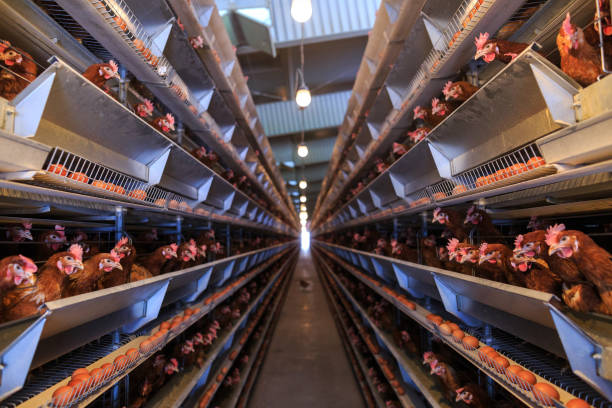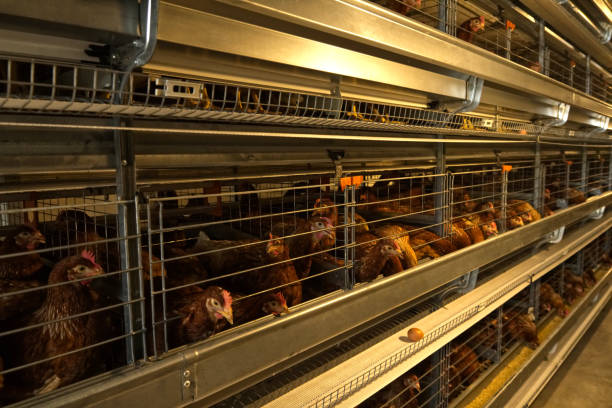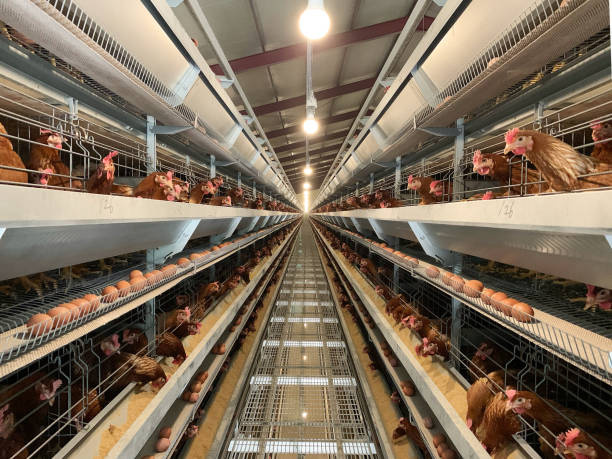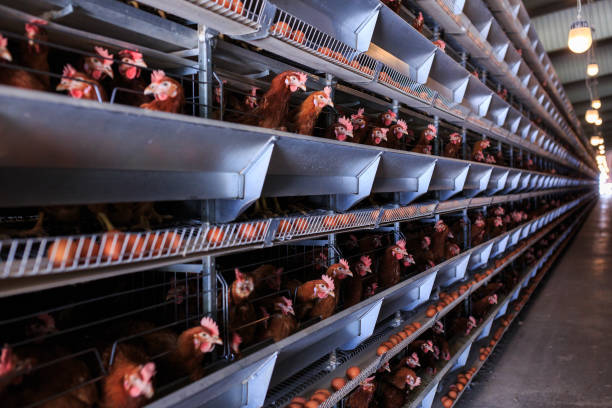
Cost-Effective Poultry Cages for 50,000 Birds in Zambia
Cost-Effective Poultry Cages for 50,000 Birds in Zambia
Zambia’s poultry industry is on the rise, and for aspiring or established farmers looking to scale up their operations, housing is a crucial element to consider. Specifically, finding cost-effective poultry cages capable of housing 50,000 birds is a critical decision that impacts everything from initial investment to long-term profitability. This article delves into the essential factors surrounding the selection and implementation of poultry cage systems in Zambia, focusing on maximizing efficiency and minimizing costs while prioritizing the health and welfare of your flock.
Undoubtedly, the biggest barrier for many new and expanding poultry farmers in Zambia is the initial capital outlay. Purchasing land, constructing buildings, and acquiring equipment can quickly drain resources. Therefore, focusing on cost-effectiveness from the outset is paramount. But cutting corners on quality can be a false economy that leads to higher expenses and lower productivity in the long run. What does true cost-effectiveness look like in the context of poultry cages?
Firstly, it means opting for a cage system that minimizes the initial investment without sacrificing durability and functionality. This often translates to comparing various vendors, assessing the quality of materials used, and negotiating the best possible price. Look beyond the sticker price! Consider the lifespan of the cages and potential maintenance issues. A cheaper cage that requires frequent repairs or replacements will ultimately cost you more in the long run.
Secondly, cost-effectiveness encompasses operational efficiency. The cage design should facilitate ease of feeding, watering, and egg collection (for layer farms) or broiler harvesting (for broiler farms). Automated systems, while initially more expensive, can significantly reduce labor costs and increase output. Automatic feeding and drinking systems are almost essential for a 50,000-bird farm, reducing labor requirements and maintaining consistency in feed and water provision. Manually feeding and watering that many birds is simply not feasible.
Thirdly, cost-effectiveness ties into bird health and productivity. Properly designed cages minimize stress, reduce the risk of disease outbreaks, and optimize living conditions. A healthy flock is a productive flock. Sick birds don’t lay eggs efficiently, and they grow slower and are more prone to mortality. Cage designs that promote adequate ventilation, prevent overcrowding, and allow for easy cleaning play a vital role in maintaining a healthy environment.
Now, let’s consider the specific types of poultry cages suitable for a 50,000-bird operation in Zambia. Different birds have different needs. For layer chickens, layer cages are specifically designed to optimize egg production and collection. For broiler chickens, broiler cages are designed to maximize meat yield and space utilization.
Layer cages are typically multi-tiered systems that house multiple birds per cage. The slope of the cage floor encourages eggs to roll forward for easy collection, either manually or via an automated system. These cages usually include built-in feeding and watering troughs that run the length of the cage rows. The key considerations for layer cages are ensuring adequate space per bird (to minimize stress and egg pecking), proper ventilation to prevent ammonia buildup, and ease of access for egg collection and bird management.
Broiler cages, on the other hand, are designed to accommodate the rapid growth of meat chickens. These cages are typically larger and sturdier than layer cages to handle the increased weight of the birds. Floor design is crucial for broiler welfare, as chickens will be confined to the cage from a young age until they are ready for market. Proper ventilation and waste management are also critical to prevent disease and maintain a healthy environment for the rapidly growing birds.

When evaluating different cage systems, look for suppliers who offer customized solutions. Different Zambian regions experience variations in climate and environmental conditions. The poultry cage system needs to be adapt to these local factors. For example, in hotter regions, ventilation systems become even more critical to prevent heat stress in the birds. Work with a supplier who can provide insights on cage design specific to the Zambian environment and your bird type.

Furthermore, consider the construction materials used in the cages. Galvanized steel is a common choice due to its durability and resistance to corrosion. However, the quality of the galvanization process can vary significantly. Opt for cages with hot-dip galvanization, which provides a thicker and more durable protective layer than electro-galvanization. The thickness and quality of the galvanization directly impact on the lifespan of the cage, especially in the humid Zambian climate.

Beyond the cages themselves, an effective waste management system is a critical component of a cost-effective poultry operation. Manure accumulation can lead to ammonia buildup, which is detrimental to bird health and can also violate environmental regulations. A well-designed manure removal system minimizes labor costs and prevents the spread of disease. Scraper systems or deep litter systems are two options for manure management. Think about the long-term implications of waste management when considering cage designs.
Water is another key factor. Consistent access to fresh, clean water is essential for poultry health and productivity. Automatic drinking systems, such as nipple drinkers or cup drinkers, provide a continuous supply of water while minimizing spillage. Spillage creates a moist environment that promotes bacterial growth and can lead to disease outbreaks.
Lighting is important as well, particularly for layer hens. An optimal lighting schedule encourages egg production. LED lighting is a cost-effective option because it uses less energy and has a longer lifespan. A good lighting system, in conjunction with proper feeding and cage environment, maximizes egg production and profitability.
Now, let’s delve into the practical considerations of setting up poultry cages for 50,000 birds in Zambia. Space is always going to be a concern. A farm of this scale requires a substantial building to house the cages and associated equipment. Plan carefully to ensure that you can comfortably accommodate all the cages, feed storage, waste management systems, and workspaces. Leave enough room for the movement of equipment and workers! Cramped conditions make it harder to manage the birds and can lead to higher stress levels.
Ventilation, as mentioned earlier, is critical. Natural ventilation can be supplemented with fans to ensure adequate airflow throughout the poultry house. Consider the prevailing wind patterns in your location when designing the ventilation system. Position fans strategically to create a consistent flow of fresh air and remove stale air and ammonia.
Biosecurity measures are equally necessary. Prevent the introduction and spread of diseases to your flock. This involves implementing protocols for visitor access, sanitation, and waste disposal. A foot bath at the entrance to the poultry house and strict control over the movement of vehicles and equipment are simple but effective biosecurity measures.
Sourcing the right supplier is very important. Look for experienced and reputable poultry equipment suppliers who have a proven track record of success in Zambia or other African countries. They should offer high-quality cages that meet international standards, as well as comprehensive support services such as installation, training, and maintenance. Also, ask for references from other poultry farmers who have used their systems.
Consider local suppliers who can offer on-the-ground support and faster delivery times. However, weigh the benefits of local sourcing against the quality and price offered by international suppliers. Sometimes, importing cages from overseas can be more cost-effective in the long run, even with the added transportation costs, if the quality is significantly higher and the lifespan of the cages is longer.
Finally, remember that cost-effectiveness is not just about the initial price of the cages. It’s about the overall return on investment. A well-designed and properly managed poultry cage system can significantly increase your profits by improving bird health, reducing labor costs, and optimizing production. Do your research, compare different options, and invest in a system that will set you up for long-term success in the Zambian poultry industry.
